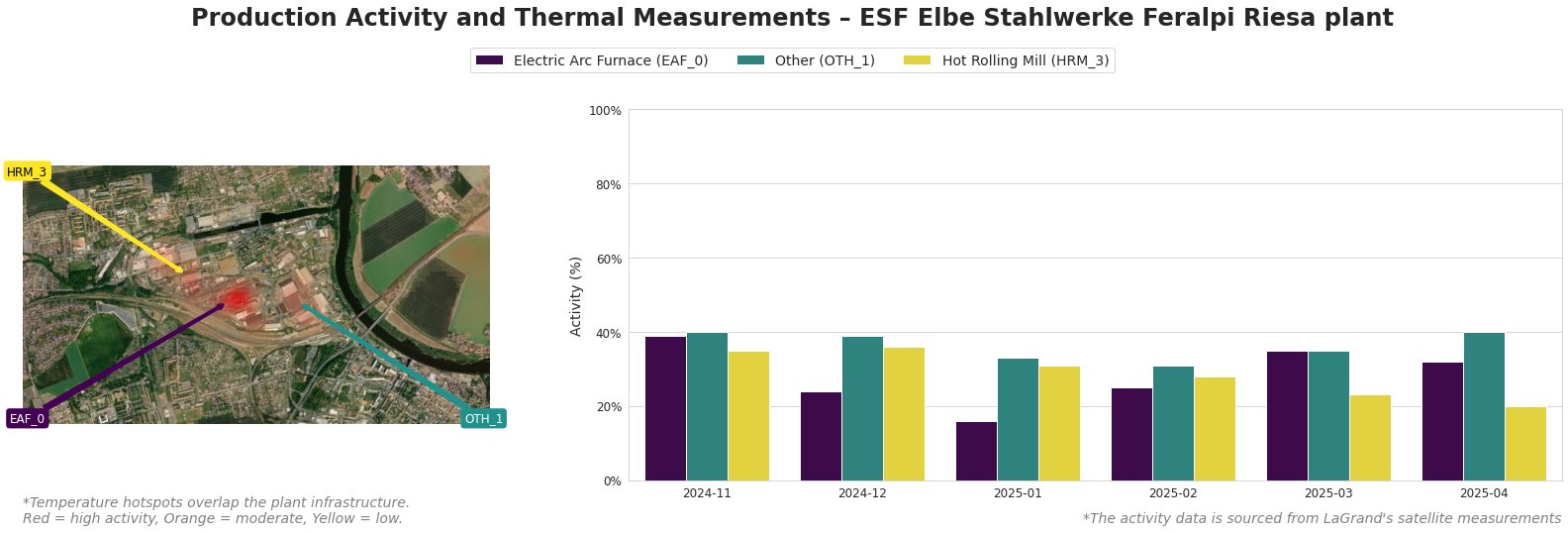
From the Field to the Dashboard – Built by Experts, for Experts.
Discover What's Really Happening in the Steel Industry
Use the AI-powered search engine to analyze production activity, market trends, and news faster than ever before.
Try the Free AI Search EngineRising Activity at Riesa Plant Amidst German Steel Market Dynamics
Introduction
The ESF Elbe Stahlwerke Feralpi Riesa plant, located in Saxony, Germany, has a production capacity of 1.4 million tons of crude steel per year. As a facility specializing in semi-finished and finished rolled steel products, it primarily serves sectors such as automotive and building infrastructure.
Activity Trend Analysis
Recent observations indicate a significant change in operational activity at the Riesa plant, with a notable increase in thermal activity. The following table details the thermal activity across key equipment over the past months:
Starting in late November 2024, the Electric Arc Furnace (EAF_1) achieved a peak of 39.0% thermal activity. Although activity dipped in subsequent months, overall engagement has shown fluctuations with a trend toward increased operational capacity, especially notable in March and April 2025.
Market Implications
The observed uptick in activity at the Riesa plant aligns with broader trends in the German steel industry. According to the article Stocks: German steel sales rose 5.6% in March amid falling inventories, the increase in steel sales alongside declining inventories indicates robust demand in the market, particularly for flat products. Furthermore, the article WV Stahl struggles to foresee German production stabilisation highlights ongoing challenges in stabilizing national production; therefore, the Riesa plant’s enhanced activity could provide a necessary supply boost amid market constraints.
Steel buyers should remain alert to potential supply fluctuations stemming from these operational changes, especially given the broader context of rising steel prices as reflected in the article Stockholding: German steel sales rise 5.6% in March as stocks fall. As production ramps up, Riesa may help alleviate some immediate supply pressures but could also navigate market volatility stemming from demand shifts.
In conclusion, the Riesa plant’s recent activity increases could serve both as a response to, and a potential mitigator of, the supply constraints currently seen in the German steel market, positioning it as a critical player moving forward.


